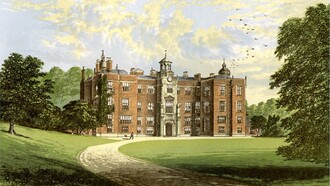The kingdom of Swaziland is one of three remaining monarchies in Africa. The other two are Lesotho and Morocco. The official name of the kingdom of Swaziland was changed to Eswatini, in April 2018.
Swaziland is a small developing nation in Southern Africa. The capital is Mbabane. This makes it the 7th smallest country in Africa and ranking 159th worldwide. The country consists of Africans 97% and Europeans 3% with a population of almost 2 million. It is said that King Mswati I had more than 70 wives and 210 children. Currently, King Mswati III has 15 wives and 23 children. Their languages are English and siSwati. They got their independence, on 6 September 1968 from the United Kingdom.
Festival
The Swazi candles are beautiful candles that are moulded into shapes, normally of animals. The Swazi people are proud and extremely friendly people that welcome their visitors with smiles and show-offs of their beautiful country. Every year the people of Swaziland celebrate Ncwala, the festival of the first fruits, vibrant music & arts festival that has fast established an excellent international reputation.
Arts and craft
Eswatini has a remarkably impressive range of traditional arts and crafts with many of its products now found in top homeware stores and trendy ethnic boutiques around the world. Throughout the country men and women are at work creating the finest handicrafts that are so popular with visitors. Creative basket ware in vibrant colours, wood and stone carvings, glassware, exquisite candles, batik items, and jewellery – all uniquely Swazi.
Food
The Eswatini diet is based on tinhlavu (grains) and tibhidvo (vegetables) and inyama (meat). Karoo roast ostrich steak is the national dish, a country whose cuisine is influenced by french cooking methods such as meat marinades and the use of various cream-based sauces. Slaai is a traditional salad originating from Eswatini made with a combination of diced avocados, crushed peanuts, lemon juice, and grated ginger. Sishwala is a traditional porridge originating from Eswatini made with a combination of dried maize, salt, water, and dried beans.
Other popular dishes include Emasi (sour milk), Umncweba and umkhunsu (dried spiced meat), Sishwala (a thick porridge served with meat or vegetable stew), umbidvo wetintsanga (pumpkin leaves cooked with groundnuts and tjwala (traditional beer).
History & museums
Eswatini’s national museum, known in siSwati as Umsamo Wesive was built in 1972 and sits just behind the parliament at Lobamba, the country’s traditional capital. A glass mausoleum preserves the very spot where the body of King Sobhuza II large brass statue of him carrying the phrase ‘Anginasitsa’, which means ‘I have no enemies’, the lay is guarded day and night, with photographs strictly forbidden; a flame is lit for important occasions.
Eswatini passport
The Swati passport currently ranks in 74th place according to the guide passport index. It provides visa-free access to 73 destinations. There are currently a total of 47 Eswatini passport visa-free countries, 25 Eswatini visa-on-arrival countries, and 1 eTA destination. Altogether, Eswatini passport holders can enter a total of 73 destinations—either without a visa, through a visa on arrival, or via an eTA. As a result, the Eswatini passport ranks 74th in the world. Swati nationals require a visa to enter about 156 destinations in the world. Some of the destinations for which a prior visa is required are the United States, the European Union, the United Kingdom, and Japan.















